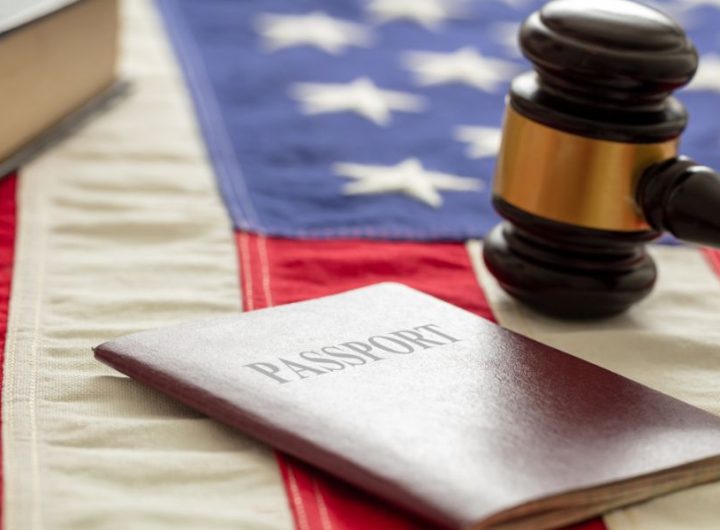
Best Corporate Advisory & Structuring Lawyer in Pune | Pentacles Legal
A sudden injury at work turns life upside down. In Washington State, the workers’ compensation system, administered by the Department of Labor & Industries (L&I) or a self‑insured employer, exists to cover medical care, wage loss, and a path back to work. Still, the rules can feel dense, deadlines are strict, and decisions arrive fast. This guide breaks down Workers Comp Rights Washington employees rely on: what benefits exist, how claims move from start to finish, what happens in disputes, and the key 2025 updates that matter. It also explains the first steps an injured worker should take and why legal guidance can make the difference.
Workers’ compensation benefits available to Washington employees
Washington operates a no-fault system, meaning that if a worker is injured on the job or develops an occupational disease, benefits don’t depend on proving employer negligence. The central question is simply whether the injury or condition is work-related.
Eligible employees may receive medical treatment coverage, wage replacement, vocational rehabilitation, and disability benefits under the Washington State Department of Labor & Industries (L&I) program. Filing promptly and providing accurate medical documentation are critical steps to ensure full compensation.
For personalized help navigating claims, appeals, or denied benefits, the experienced team at Lehmbecker Law guides Washington workers through every stage of the workers’ compensation process—protecting their rights and ensuring fair recovery.
Core benefits most workers can access
- Medical treatment: Reasonable and necessary care related to the industrial injury or disease, with no copays or deductibles. Workers may choose an attending provider from L&I’s network and change providers if needed.
- Time‑loss compensation: Wage replacement when the worker is temporarily unable to work due to the accepted conditions. The percentage paid depends on factors like marital status and dependents, subject to a statutory maximum.
- Loss of earning power (LEP): Partial wage replacement if the worker returns to accommodated or part‑time work and earns less than their pre‑injury Average Monthly Wage (AMW).
- Permanent partial disability (PPD): A one‑time award when the injury leaves a permanent impairment but the worker is not totally disabled. Ratings are based on medical evaluations and statutory schedules.
- Pension (total permanent disability): Lifetime monthly benefits when accepted conditions permanently prevent any gainful employment.
- Vocational rehabilitation: Services that may include retraining, job search assistance, or on‑the‑job training when the worker can’t return to their old job.
- Travel and related expenses: Mileage to covered appointments and certain prosthetics, orthotics, or durable medical equipment.
- Death benefits: For eligible dependents when a work injury or disease causes death, including burial benefits and ongoing survivor payments.
Protections alongside benefits
- Anti‑retaliation: Employers may not fire, demote, or otherwise retaliate because a worker filed a claim or exercised rights under the Industrial Insurance Act.
- Job modifications and stay‑at‑work incentives: Programs encourage employers to offer safe, medically appropriate light duty so injured workers can keep earning while they heal.
These benefits and protections form the backbone of Workers Comp Rights Washington employees count on after an injury.
How the claims process works from start to finish
Navigating a claim is part timeline, part paperwork, and part medical documentation. Knowing the sequence helps workers avoid costly missteps.
1) Get medical care and report the injury
Emergency care comes first. As soon as practicable, the worker should tell a supervisor and see an L&I‑network provider. Occupational diseases often start with a primary care visit where the occupational link is documented.
2) File the claim
- State‑fund employers: The provider often files the Report of Accident electronically with L&I. Workers can also submit a claim via My L&I or by phone.
- Self‑insured employers: The worker reports to the employer: the employer processes the claim and issues orders (subject to L&I oversight).
Timelines matter. Generally, an injury claim must be filed within one year of the injury date. Occupational disease claims usually must be filed within two years of when a physician first notifies the worker in writing of the condition’s work‑related nature.
3) Claim acceptance or denial
L&I or the self‑insured employer investigates medical evidence and workplace facts. If accepted, medical bills get paid and wage‑loss may start. If denied, the decision will explain why, and a protest/appeal window opens.
4) Establish the Average Monthly Wage (AMW)
AMW drives time‑loss and LEP rates. It typically includes regular wages and certain employer‑paid benefits at the time of injury. Errors here can ripple through the entire claim, so workers often review pay stubs, hours, and benefits closely.
5) Ongoing treatment and work status
Attending providers certify work restrictions. If the worker can’t return to the job of injury, L&I may explore light‑duty options or refer for vocational services. Independent Medical Examinations (IMEs) may be scheduled to assess diagnosis, treatment, or impairment.
6) Vocational assessment and retraining
If return to the original job isn’t medically feasible, a vocational counselor evaluates transferable skills and labor market prospects. Plans may involve schooling, certifications, or structured job search.
7) Closure and awards
When the medical condition reaches maximum medical improvement (MMI), the claim may close with or without a PPD award. If the worker is permanently and totally disabled, a pension may be granted.
8) Protests and appeals
Most written orders carry a 60‑day deadline to protest to L&I or appeal to the Board of Industrial Insurance Appeals (BIIA). Missing that window can lock in unfavorable decisions.
Handled well, this timeline protects the Workers Comp Rights Washington law guarantees, medical care, income support, and a fair path back to work.
Disputes with employers and insurance carriers explained
Disagreements happen, often around medical causation, work capability, or money. Understanding where disputes arise helps workers and employers resolve issues efficiently.
Common friction points
- Claim denials: Insurer disputes that the injury happened at work or that a disease is occupational.
- AMW and benefit rates: Disputes over hours, overtime, seasonal work, or inclusion of employer‑paid health premiums.
- Work ability: Conflicting opinions between attending providers and IME doctors about restrictions or MMI.
- Vocational plans: Whether retraining is appropriate or whether the labor market supports a return to work.
- Claim closure and impairment rating: Contests over the degree of permanent impairment and entitlement to PPD or pension.
How disputes move forward
- Protest to L&I: A written protest asks the agency to reconsider. Additional medical records or wage documents can turn a case around.
- Appeal to the BIIA: An independent tribunal reviews evidence through mediation, depositions, and hearings. Expert testimony, treating doctors, vocational experts, often proves decisive.
- Superior Court review: Parties can seek judicial review of BIIA decisions.
Throughout, deadlines rule. Most orders carry a 60‑day protest/appeal period. Missing it can permanently fix the outcome, even if the evidence later improves. Keeping complete medical notes, saving correspondence, and documenting job searches gives a disputed claim a fighting chance.
Key updates in Washington workers’ rights for 2025
Washington’s workers’ compensation system is dynamic. Each year brings rule refinements and financial adjustments that change what workers actually receive.
Notable 2025 developments to watch
- Annual benefit adjustments: L&I implements its yearly cost‑of‑living changes that affect time‑loss and pensions, along with updates tied to the State Average Monthly Wage. These shifts can raise the maximum and minimum benefit rates in 2025.
- Mileage and reimbursement rates: Transportation reimbursement typically aligns with annually updated rates. For 2025, workers should check current mileage levels before submitting expenses.
- Digital filing and communications: L&I continues to expand secure electronic filing, e‑signatures, and My L&I messaging. The practical impact is faster decisions and clearer paper trails for protests and appeals.
- Ongoing clarity on retaliation protections: Enforcement guidance around RCW 51.48.025 continues to evolve, with an emphasis on prompt investigation of retaliation complaints and meaningful remedies.
- Telehealth and IME practices: Post‑pandemic rulemaking has stabilized how telehealth integrates with claim management. In 2025, providers and workers can expect continued access to remote visits where clinically appropriate.
Because specific rates and rule texts change over the year, workers and employers should verify the latest figures directly with L&I or consult experienced counsel for real‑time guidance.
What steps should injured employees take immediately?
A few early choices tend to shape the rest of the claim. The following actions protect both health and benefits.
- Prioritize medical care: Emergency treatment comes first. After stabilization, choose an attending provider in the L&I network and describe precisely how the injury happened or the work exposures involved.
- Report promptly: Notify a supervisor as soon as possible. Late reporting can complicate witness accounts and insurer decisions.
- File the claim: Don’t wait for the employer to do it. If the provider hasn’t filed, the worker can file directly with L&I (state fund) or with the self‑insured employer’s claims unit.
- Track the AMW: Gather pay stubs, schedules, overtime records, and details of employer‑paid benefits. Small errors in AMW can cost significant dollars over time.
- Follow restrictions: Keep copies of work‑status notes. If light duty is available, clarify tasks in writing to avoid re‑injury or disputes.
- Save everything: Orders, IME notices, vocational correspondence, and mileage logs should be organized from day one.
- Watch the mail and deadlines: Most orders have a 60‑day protest/appeal window. Mark calendars and set reminders.
- Be mindful online: Social media posts can be misunderstood or used out of context in disputes.
Handled early and carefully, these steps help preserve the Workers Comp Rights Washington provides, treatment, wage protection, and fair resolution.


 Uncovering the Realms of Property Division During a Divorce Case
Uncovering the Realms of Property Division During a Divorce Case  Estate Planning After Divorce: Protecting Your Financial Future in Boston
Estate Planning After Divorce: Protecting Your Financial Future in Boston  The Role of Evidence in Winning a Car Accident Claim in Atlanta
The Role of Evidence in Winning a Car Accident Claim in Atlanta  Exploring the EB-5 Investor Visa Program and Immigration Pathways in 2025
Exploring the EB-5 Investor Visa Program and Immigration Pathways in 2025  Comprehensive Legal Help from Personal Injury Lawyers in Long Beach
Comprehensive Legal Help from Personal Injury Lawyers in Long Beach  Smart Strategies a Harlem Personal Injury Lawyer Uses to Maximize Car Accident Settlements
Smart Strategies a Harlem Personal Injury Lawyer Uses to Maximize Car Accident Settlements